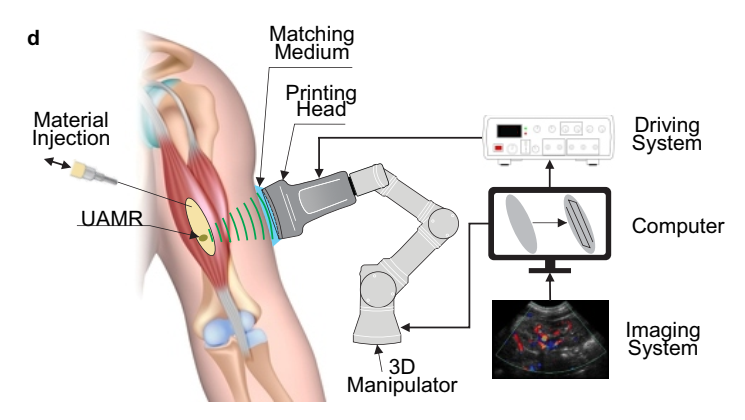3D printing techniques currently use light or heat to harden photopolymers, metals, or wax…building parts one layer at a time.
A new technique takes another approach by utilizing sound waves
Now, researchers at Canada’s Concordia University have developed a novel 3D printing technology using ultrasonic soundwaves for digital 3D printing of materials called Direct Sound Printing (DSP).
Researchers used focused ultrasound waves to create sonochemical reactions in resin to temporarily form rapidly oscillating tiny bubbles at specific points in resin.
The temperature inside the oscillating bubbles rises to about 15,000 degrees Kelvin (14,727 ºC or 26,540 ºF), and the pressure exceeds 1,000 bar (14,504 psi). Although this increase in temperature and pressure only lasts for trillionths of a second, it transforms the liquid resin into solids at a specific location. The ultrasound wave’s frequency, and the viscosity of the material being used can be adjusted to generate pre-designed complex geometries.
“Ultrasonic frequencies are already being used in destructive procedures like laser ablation of tissues and tumors. We wanted to use them to create something,” said Muthukumaran Packirisamy, a professor and Concordia Research Chair in the Department of Mechanical, Industrial and Aerospace Engineering at the Gina Cody School of Engineering and Computer Science.







